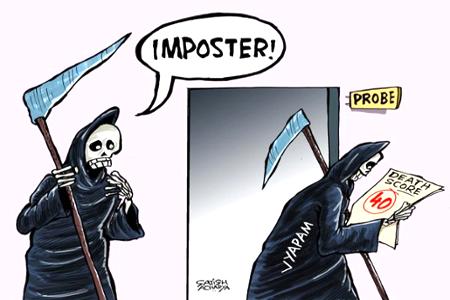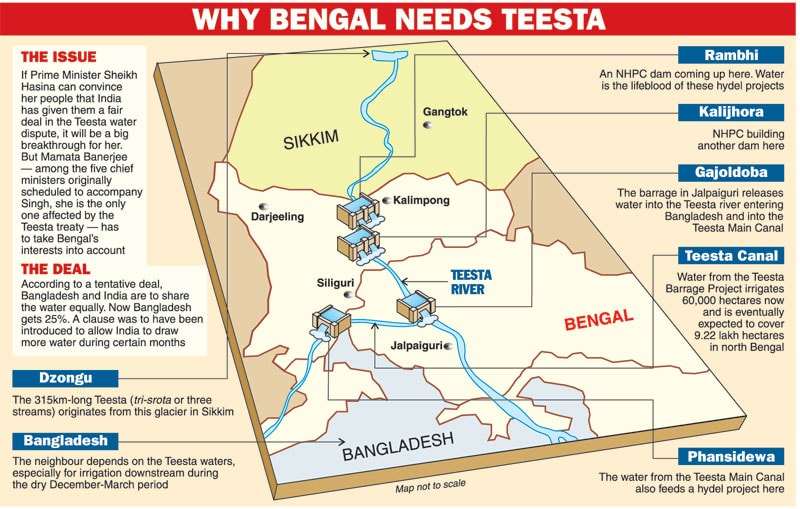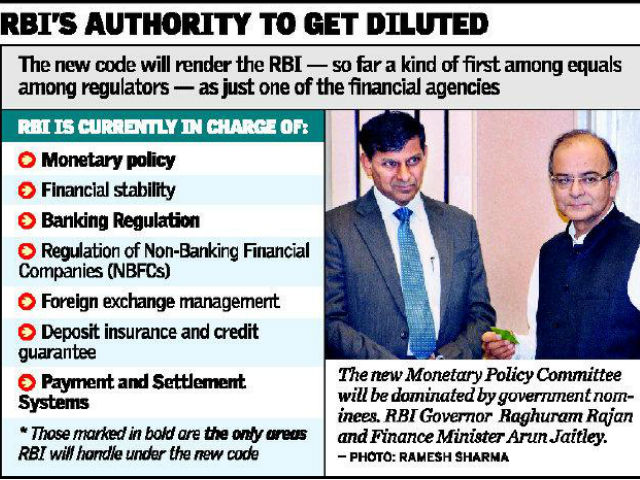IASbaba's Daily Current Affairs Analysis, IASbaba's Daily Current Affairs August 2015, International, National, UPSC
Archives
IASbaba’s Daily Current Affairs- 15th & 17th August, 2015
NATIONAL
The Killer Scam-Vyapam Scam
What is this scam about?
- The scam is an admission and recruitment scam involving politicians, senior
 government officials, business-persons and others in Madhya Pradesh. In it, undeserving candidates bribed politicians and MPPEB officials, through middlemen, to get high ranks in the entrance tests or secure jobs.
government officials, business-persons and others in Madhya Pradesh. In it, undeserving candidates bribed politicians and MPPEB officials, through middlemen, to get high ranks in the entrance tests or secure jobs. - Many of those who discovered these sordid facts whistleblowers and journalists responsible for unearthing the details have died in a spate of suspicious incidents.
How did they deceive authorities?
The following tricks were used by those involved in the scam:
- Impersonation: All the information of the candidate remained the same, except the photograph. The candidate’s photograph was replaced by that of the impersonator and after the exam, it was changed back to the original. Obviously, the impersonators were brilliant students and they received huge sums to keep their mouths shut.
- Engine and bogie system: A person was strategically made to sit in front of the candidate in question. The person let them copy from his sheet or exchanged the sheet with them at the end of the exam.
- OMR sheets: The candidates in question were asked to leave their answer sheets blank and were given high marks in the exam. Or they were supplied with solved OMR sheets before they took the exam.
Are the Whistle Blowers in India protected?
- The fact remains that in the absence of an institutional structure designed to protect witnesses, mere administrative enthusiasm can never serve the purpose.
- The nearest we have come to such a structure is in passing the Whistleblower Protection Act, 2011, which finally received Presidential assent.
- The Centre has moved to substantially amend it to ensure that whistleblowers are prevented from disclosing a wide variety of information including commercial secrets and IPR.
What is Whistleblowers Protection (Amendment) Bill, 2015?
No public interest disclosure may be if it contains:
- Information likely to prejudicially affect the sovereignty and integrity of India, the security, strategic, scientific or economic interests of the state, relations with foreign state, or lead to incitement of an offence;
- Cabinet papers including records of deliberations of the Council of Ministers, secretaries and other officers except as provided for under the Right to Information Act, 2005.
- The information relates to commercial confidence, trade secrets, intellectual property (and such disclosure would harm a competitor).
- Information is received in confidence from a foreign government;
- The disclosure of the information would endanger the life or physical safety of a person, or identify the source of information given in confidence for law enforcement or security purposes.
- The disclosure of personal information if it has no relationship to any public interest, or if it causes unwarranted invasion of privacy. However, if such information has been made available under the Right to Information Act, 2005, then it may be disclosed.
What are the basic features of any law that addresses corruption?
- First and foremost, the man most competent to prove bribery is the man who gave it. On the principle that the man giving a bribe is being forced to pay his way, bribe-giving should be legal but bribe-taking should not.
- Absolute secrecy is the second must-have for any whistleblower law.
- Witness protection is not about being followed on a morning walk by a baton-wielding policeman. Witness protection is about specialist security servicemen, safe houses, new identity papers, secret relocation and resettlement. This presumes an institutional structure grounded in a legal framework riding on a generous budget.
- Next we have the problem of persecution and hounding. This occurs at two levels depending on whether the whistleblower is on the inside or outside. The insider suffers the fate of IAS officer Ashok Khemka. He is transferred 40 times in 22 years because he refuses to engage in dirty dealings.
- Finally, we come to the question of who investigates the data and who deals with the witnesses.
Connecting the Dots:
- Is Vyapam scam reflecting the real face of Indian corruption?
- Do you agree with the statement “Educational extravaganza became an invitation to corruption bonanza”? Yes or No. Justify your answer
INTERNATIONAL
India- Bangladesh: Time to Look at Teesta
- Having resolved the longstanding issue of enclaves during the prime minister’s recent visit to Bangladesh, New Delhi has to focus now on other bilateral issues, the most contentious one being the sharing of Teesta waters.
- In the case of Teesta River, which originates in Sikkim and flows through West Bengal into Bangladesh, settlement has not been arrived at for decades now.

What is the Teesta Issue all about?
- In 2013, an agreement was drafted which allowed for the 50:50 allocation of teesta waters between the countries during the lean season, when the real problems of allocation crop up. However, that was not acceptable.
- India and Bangladesh share 54 rivers between them.
- West Bengal has been opposing the treaty fearing that the loss of higher volume of water to the lower riparian would cause problems in the northern region of state, especially during drier months.
- It is estimated that the Teesta River has a mean annual flow of 60 billion cubic meters but a significant amount of this water flows only during wet season(June-Sept) leaving scant flow during the dry season(October-May) wherein the average flow gets reduced to about 500 million cubic metres (MCM) per month.
- This creates issues of equitable sharing during lean season.
- Bangladesh has claimed that West Bengal’s Gazaldoba barrage is ‘unilaterally’ channelizing a large volume of water on the Teesta, due to which the country’s historic flow has been reduced to only 10% and its Teesta Irrigation Project has suffered.
- This is further compounded by the downstream nature of Bangladesh wherein any construction by India affects the water flow available to Bangladesh.
- Furthermore, there are proposals to build 31 dams in the upper catchment area of the Teesta in Sikkim, along with the 4 dams that are already underway.
- One of the important factors responsible for diminishing flow of water is the building of about 12 hydel power projects over the Teesta in Sikkim where the river originates.
What proposals are made to augment the river flows during the non-monsoon months?
- The deficit in flows can be met by the transfer of water from other water-endowed basins.
- In this connection, the proposals made in the Indian River Linking (IRL) project could be considered.
- The Manas-Sankosh-Teesta-Ganga (MSTG) link canal is one of the links proposed under the Himalayan component of the IRL.
- It envisages diversion of the surplus waters of the Manas and Sankosh rivers to the Teesta, Ganga and beyond, to meet the requirements of water-deficit areas.
- By making suitable provisions in the link canal, it should be possible to release the required water into the Teesta during the summer to augment river flows, thus meeting the requirements being proposed for water-sharing with Bangladesh.
What is Indian River Linking Project (IRL)?
- The Indian Rivers Inter-link is a proposed large-scale civil engineering project that aims to link India’s rivers by a network of reservoirs and canals and so reduce persistent floods in some parts and water shortages in other parts of India.
- The Inter-link project has been split into three parts:
- a northern Himalayan rivers inter-link component
- a southern Peninsular component and starting 2005
- An intrastate rivers linking component.
What is (MSTG) link canal?
- The Manas-Sankosh-Teesta-Ganga (MSTG) link canal is one of the links proposed under the Himalayan component of the IRL.
- The Manas-Sankosh-Teesta- Ganga link canal envisages diversion of surplus water of Manas and Sankosh rivers with supplementation from the intermediate major streams for the benefit of augmenting the flows of Ganga at Farakka.
- It aims to further transfer it to water short areas of Krishna, Pennar and Cauvery basins and providing irrigation facilities to the enroute command areas.
- This link will comprise two dams on rivers Manas and Sankosh inside Bhutan territory and a gravity flow canal for diverting substantial quantum of water to river Ganga upstream of Farakka barrage.
How is India working for a permanent solution?
- A possible option considered was that since the regeneration of flow in the river channel between the Gajoldoba and Dalia barrages is about 25 per cent, which would be available at the downstream barrage the additional 25 per cent demanded by Bangladesh could be released by West Bengal from the upstream barrage.
- But the state had its own compulsions for meeting irrigation needs as the summer flows are generally erratic.
- Hence, West Bengal did not want to commit to releasing water from the upstream barrage, at the cost of its major project envisaging the irrigation of 9.22 lakh hectares in the ultimate stage.
- Thus, the water-sharing arrangement got embroiled in domestic hydro-politics, stalling further action to find an acceptable solution to the dispute.
IAS BABA’s View
- Teesta water is an absolute right of Bangladesh, which is recognised by many international instruments and customary international law.
- Earlier, Indo-Pakistan Krishenganga water sharing disputes was settled under the World Bank as a third party.
- Now it is high time for Bangladesh to seek remedy by such kinds of international Organizations and International courts.
Connecting the Dots:
- Historically, the progress of the India-Bangladesh relationship has always hinged on issues of water-sharing. Critically Analyze.
- Discuss all the realistic concerns that make it essential for the Indian government to provide a fair deal to Bangladesh.
ECONOMICS
New financial commission
- While countries in the West are giving their central banks more authority and regulatory powers, India is proposing a system to reduce the RBI to a shadow of itself.
- The code, if implemented, will undermine RBI’s ability to rein-in inflation.
- This will also discourage investors in taking risks in the future as RBI has been viewed by many as an anchor for financial stability in the country.

What does the new draft says?
- The Monetary Policy Committee (MPC) will be chaired by the RBI governor
- It will also comprise a member of the RBI board and an RBI employee
- Decisions at MPC meetings will be taken by a majority vote of the members present and voting
- The previous draft had suggested the RBI governor have the power to supersede any MPC decision
- Each member of the MPC will have to state the reasons for voting in favour of or against proposed resolutions
What is the proposed shift in the structure?
- At present, the monetary policy is framed by the central bank after factoring in the recommendations of an expert advisory committee, assessing multiple economic indicators in domestic and global markets and, finally, consulting with the finance minister on the broader policy direction.
- The final decision, however, rests with the governor.
- But, under the proposed framework, RBI governor will be one of the several members of the committee and the government will dictate the policy.
- In effect, the power to decide the country’s monetary policy will be shifted from an independent, credible institution to the political interests of the government, for whom monetary policy will then be among the many tools under disposal to work operate in line with its political agenda.
What are the Possible Conflicts of the new proposal?
- The potential for conflict of interest is vast.
- So far, the government has been interested in securing high growth rates, not only as an electoral plank but also as a means to finance various expenditure schemes proposed in each Budget.
- The RBI, on the other hand, is tasked with controlling inflation, which often accompanies high growth rates.
- Raising interest rates is the best tool to achieve this, but it also puts a dampener on growth.
- This will give room to major conflict of interests in the functioning of the MPC. For instance, a government-controlled MPC can push for a rate cut, even if the RBI is not fully convinced with the signals emanating from the inflation-front.
- The RBI will then be forced to sing the same tune of the finance ministry.
- This can put the economy in serious trouble in the long term.
IAS BABA’s View
- Sidelining the central bank according to political whims and fancies of politics, the government will risk making India’s economy a black spot in the eyes of rest of the world with no credible, independent monetary policy framework.
- An RBI, with little control on the monetary policy, will not be a favorite in the eyes of global investors and international rating agencies, which would do no good for India, which is aspiring to become a global economic power.
Connecting the Dots:
- What is the exact aim of the proposed Indian Financial Code (IFC)? What is it trying to fix? Is a need for a fix at all?
- Is the Government undermining the RBI’s Independence with its new proposals?











